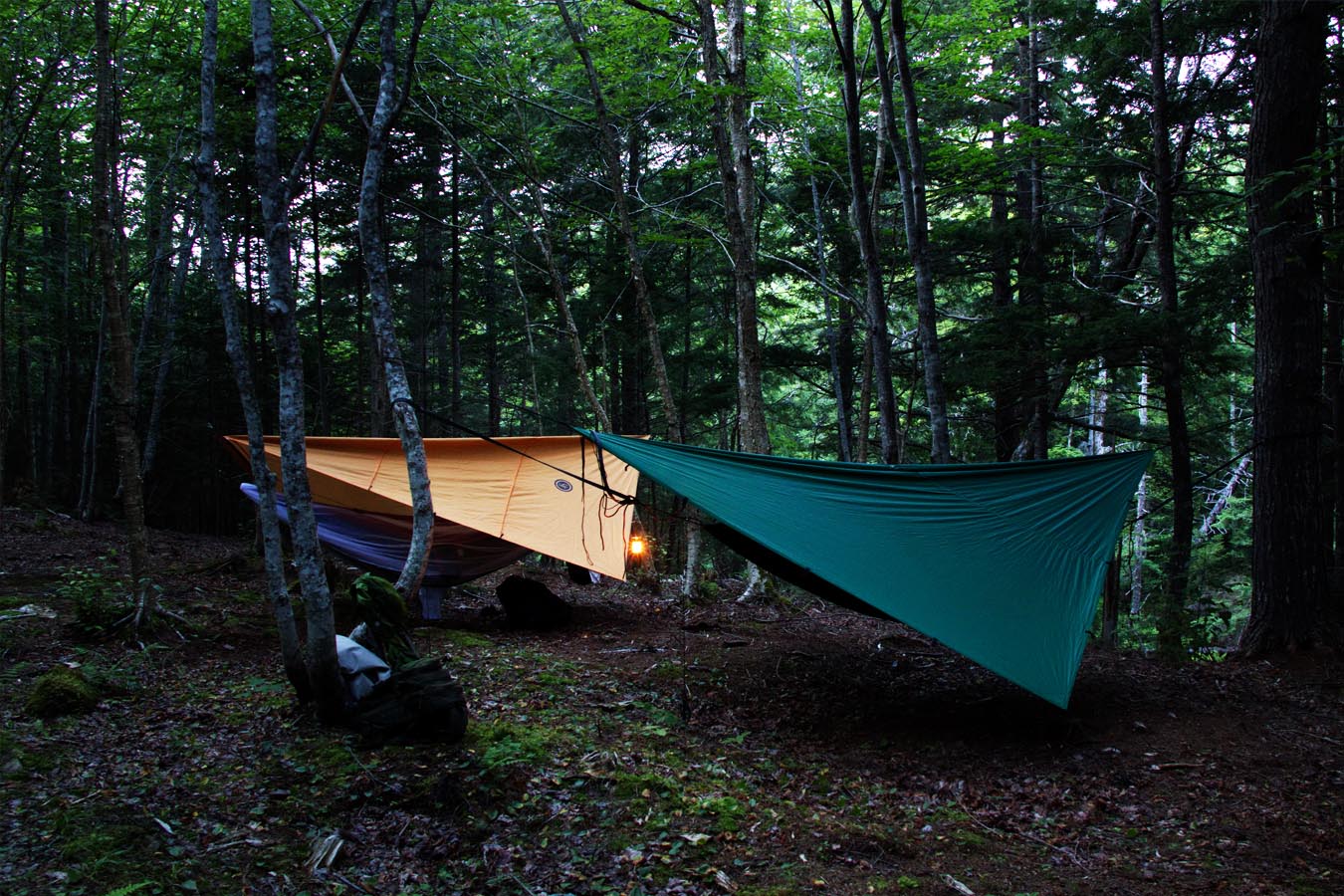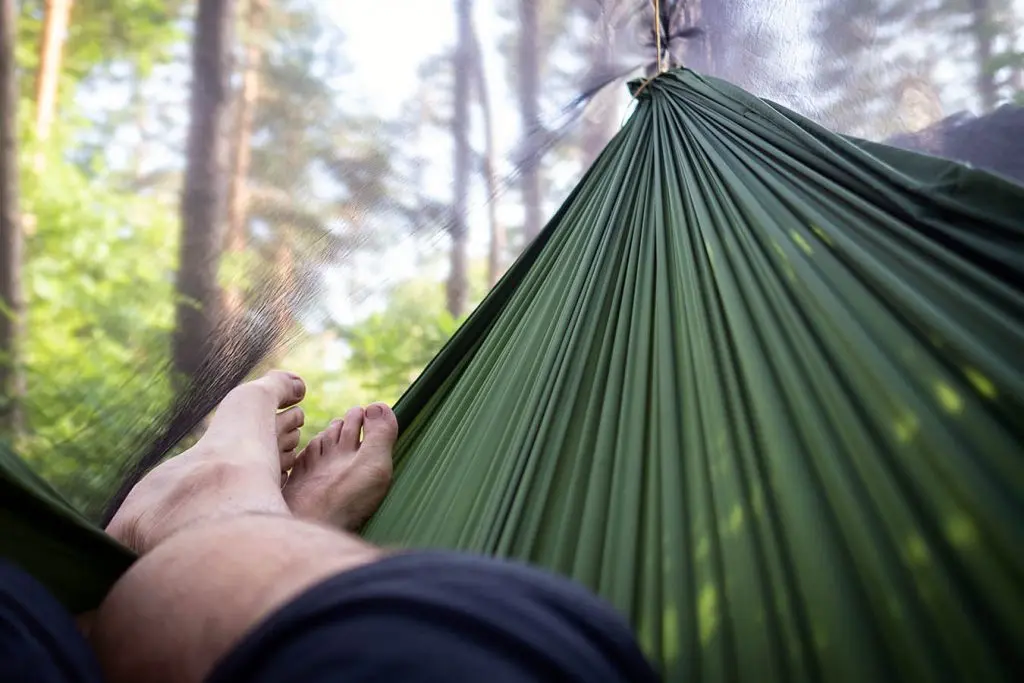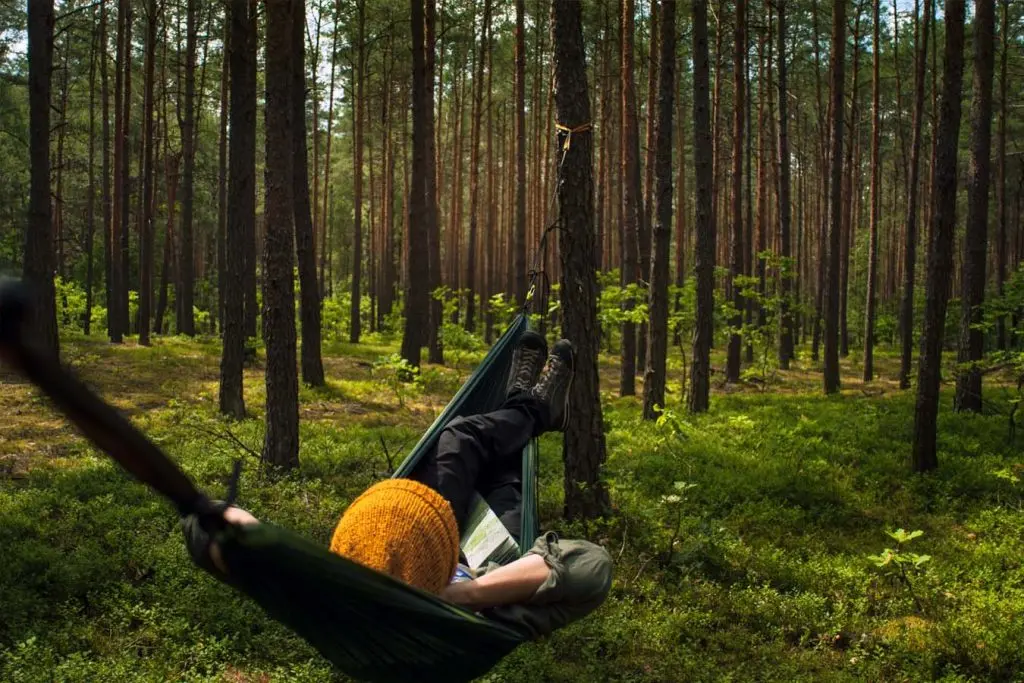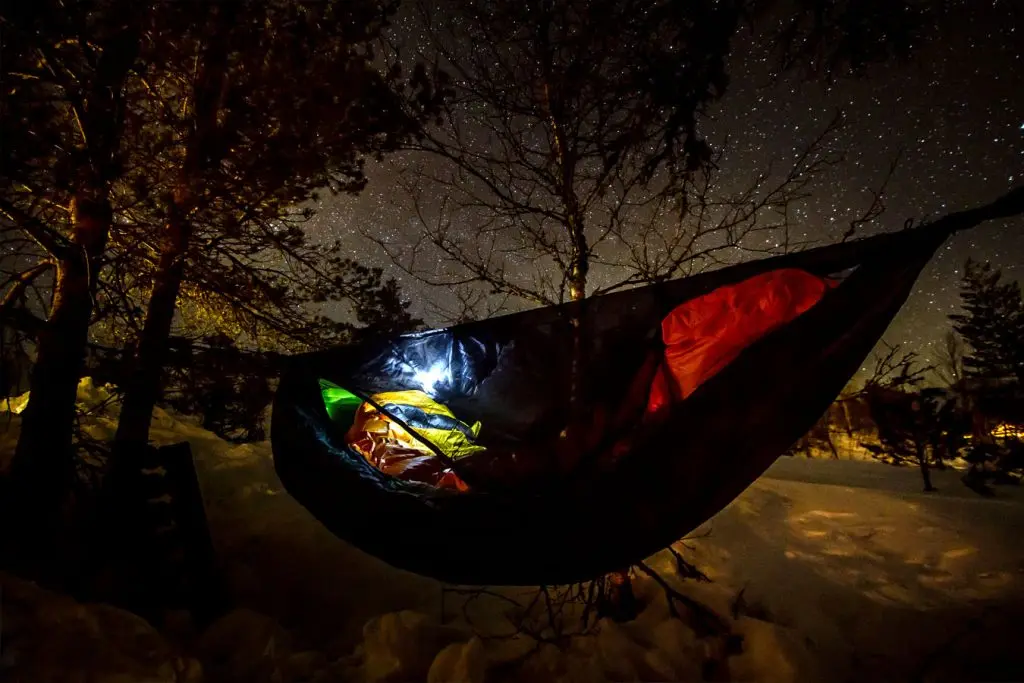After years of only considering tents, more and more outdoor enthusiasts beginning to consider and add hammock camping to their range of activities. Those who hammock camp can enjoy picture-perfect locations anywhere in the world as long as they have just two equally spaced trees.
From beginners to experts, the following article address’s the most important characteristics of hammock camping from comfort to safety, through to setting up and packing away.
What is hammock camping?
Hammock camping requires either two suitable trees, or a portable stand to ensure adequate suspension and a comfortable nights sleep. In short it is an evaluated alternative to traditional tent camping, that comes with its own unique set of advantages (and disadvantages).
A hammocks lightweight enables it to fit into a camping backpack with ease, and when hung, offers superior visibility to the immediate surroundings, through which users can gain maximum enjoyment from their natural surroundings.
Comfort is also enhanced as the sleeper isn’t laying directly on top of rocky ground, which is often the case when sleeping inside a tent. Additionally, using a sleeping pad inside your hammock can improve comfort further, So much so that a lot of campers say it is very comparable to resting in their actual bed at home.
Why go hammock camping?
Independence is one of the main drivers of hammock camping. There are endless situations where campers can’t find a sufficient setting for their tent, with a hammock, this issue is eliminated as any location with two solid trees is sufficient for a comfortable nights sleep.
A hammock is also a lot lighter than a tent which further enhances the feeling of independence. Trekkers can carry their hammocks relatively easily without excess strain, and in many circumstances are therefore able to travel further.
Hammocks also feature very specific benefits over other types of camping, such as an elevated head position during sleep, which helps to encourage good blood flow. Hammocks also help to reduce stress, as it has been proven that swaying helps people to fall asleep faster.
This camping method also comes with no pressure points. Due to their design, hammocks don’t rely on pressure points contributing to relaxation and reduced muscle aches.
Hammocks vs. tents – a quick comparison
Both hammocks and tents have plenty of advantages. But both have a series of drawbacks, depending on sleeping preferences and the type of camper.
Tents are known for offering shelter, stopping rain, wind, and bugs from disturbing sleep. While the soft nylon materials of tents are not heavy, their supporting poles add weight and size to a camping backpack, which can be a considerable drawback.
On the other hand, hammocks are known for their high levels of versatility…
- All hammocks are lightweight and easy to carry.
- Hammocks are fully set up within minutes.
- They are more comfortable than sleeping on the ground.
- Compatible with mosquito nets, hammocks also offer undisturbed sleeping.
- During the summer nights, hammocks allow sleepers to admire the stars of the nighttime sky.
But hammocks also come with some drawbacks as well…
- Hammocks are not comfortable for couples or multiple sleepers.
- There’s no place to store a backpack outside hanging it off your hammock.
- Privacy is non-existent when compared to changing inside a tent.
- Ultimately, a hammock is only useful in areas with trees.
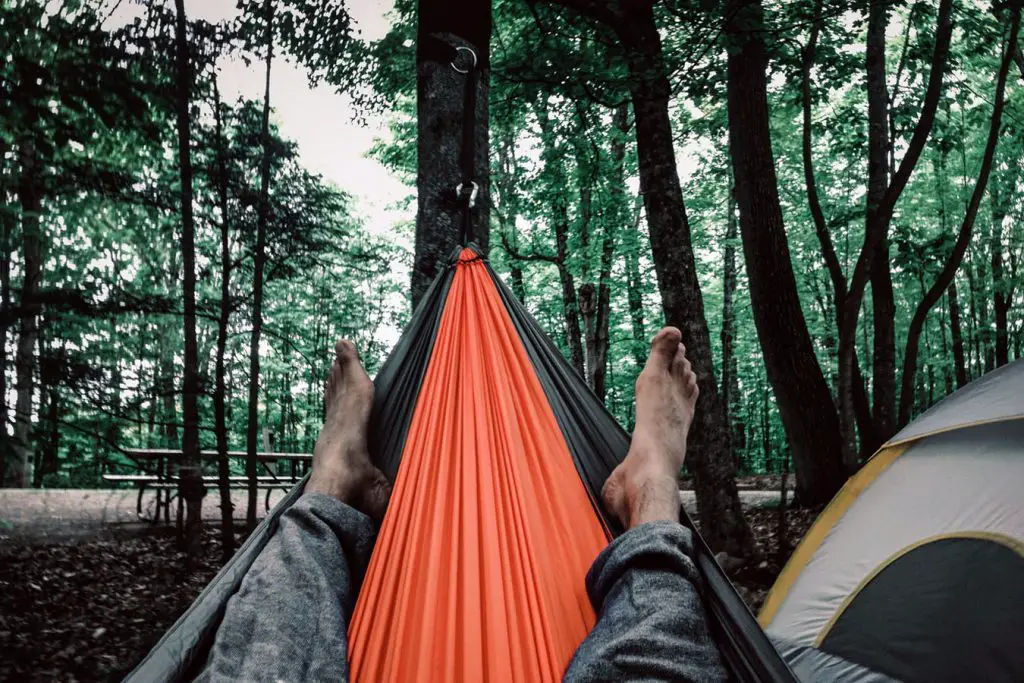
Is camping in a hammock comfortable?
Sleeping in a hammock is very comfortable. Our How To Sleep In A Hammock guide details how proper comfort can be achieved. Small tips such as sleeping diagonally are what those new to hammock camping need to know about to be as comfortable as possible.
Those who’ve struggled to find comfort while sleeping directly on the ground, even in a tent, are among the happiest hammock campers. Of course, finding the right comfort inside a hammock takes time. But once the sag is good and the user is comfortable with swaying, hammocks offer a perfect sleeping platform that can feel just as good as your bed at home.
Compatible with sleeping bags and sleeping pads, hammocks can be further improved in sleeping comfort. It’s worth considering this camping method when dealing with low back pain or with muscle aches that are still prominent when trying to sleep on the ground.
Using a small head pillow under the knees can also help with muscle fatigue, or to reduce low back pressure for those experiencing back pain.
The basic equipment you need to hammock camp
A simple hammock is everything you need to sleep out in nature. Our Best Hammock With Mosquito Net guide goes over the leading options in terms of comfort and durability. These hammocks can be useful to keep insects out for maximum sleeping comfort. The best part is they have built-in nets, and therefore easier and quicker to set up.
You don’t need heavy equipment to hang hammocks. Basic straps are useful for quick set up. Our Do Hammock Straps Harm Trees? article details the various types of straps most useful for camping. It also looks into the types of straps lest harmful to trees.
Campers might also feel comfortable with a sleeping pad. Our guide to Finding The Best Hammock Sleeping Pad is where you can find more details on the various types of sleeping pads available and their compatibility with certain hammocks.
If you’re embarking on your first hammock camping experience, here’s our checklist...
Essential gear
- A camping hammock
- Hammock straps
Extra gear
- Rain fly / tarp
- Bug and mosquito net (if your hammock doesn’t have one)
- Stakes
- Sleeping pad
- Sleeping bag
- Underquilt
- Top quilt
Other gear might also be useful. For example, extra carabiners can be used to hang various objects such as hiking boots or backpacks.
A paracord might also be useful, especially when you need to hang a tarp, and stakes or guylines might also prove useful in securing the tarp against high winds.
How to set up a camping hammock
Setting up a hammock shouldn’t take more than a few minutes. And for those unsure, head over to our Guide on How To Hang Your Hammock Between Two Trees, which details how to efficiently and safely hang and set up your hammock.
If you need further guidance, our guide on How To Sleep In A Hammock also is a good starting point. Where we discuss the details of sleeping accessories such as hammock pillows and how you can use them to find a better sleeping position. Here are 5 tips you can apply today for efficiently setting up your hammock.
Consider the right angle of suspension
In general, it’s recommended to have the straps at a 30-degree angle from the ground to reduce their pressure. Hammock straps should never be flat or parallel to the ground as this considerably increases the pressure on the anchoring accessories while reducing the much-needed sag.
Find the right height
It’s best to keep the hammock quite close to the ground. Its lowest middle area shouldn’t be higher than a chair’s height for easy access. Most hammock campers recommend a height between 6 and 12 feet for the straps.
Raise your feet
Raising the foot end moves the sleeper away from the center of the hammock. In turn, this supports better nighttime sleep without always slipping lower.
Only count on the right trees
For safety reasons, all hammocks should be set up on healthy trees. For the right support, these trees should have a minimum diameter of 6 inches and further away from water and hazards such as falling branches from above.
Use carabiners between the hammock and straps
Unlike when using a tent, all gear has to be secured above the ground. Carabiners help hang backpacks and even the camping boots, keeping them off the damp ground.
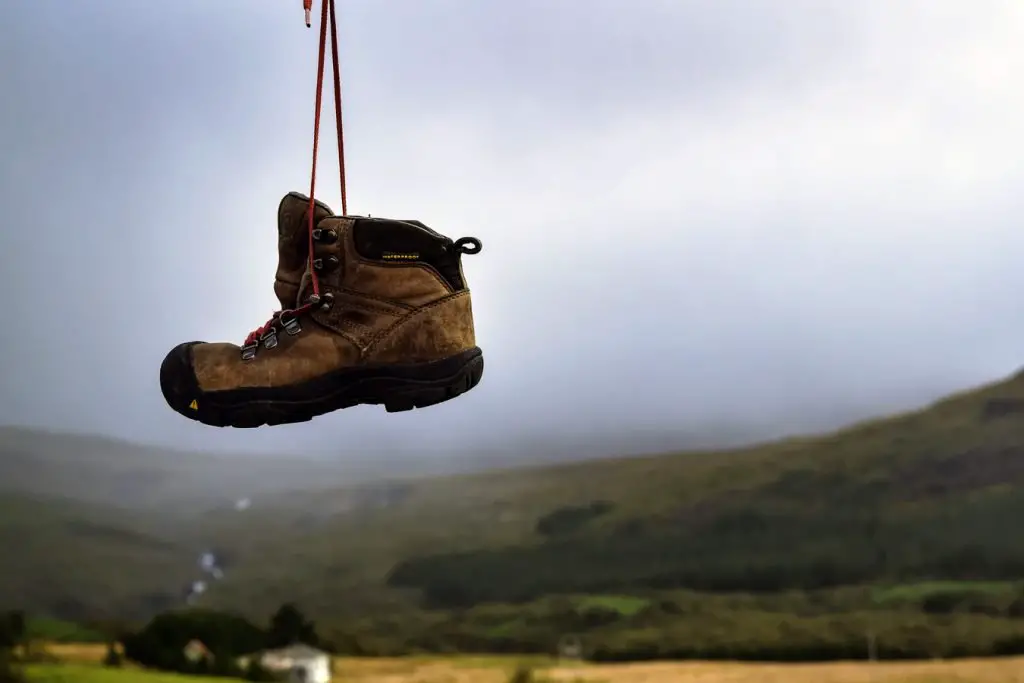
How to sleep in a hammock
Finding the right sleeping position might take time. But those about to sleep in a hammock for the fist time, can learn more about comfort set up tips in our How To Sleep In A Hammock guide. For example, not many campers know that hammocks are made for people to sleep diagonally in, as it helps to open the hammock up.
Avoid hanging the hammock too tight – When you setting up your hammock, you need to look for the sag which naturally cocoons the sleeper. When the hammock is too tight, there’s no sag and there’s therefore too much tension in the nylon for comfortable sleeping.
Try out different sleeping positions – When it comes to sleeping comfort, many expect to lie on their back for the whole night. But you can try out different sleeping positions as well.
When a hammock sits at 30 degrees, your back can sit slightly curved in the hammock. This enhances nighttime sleeping comfort.
If you like to lay on your side, you can bend your knees at 30 degrees and pull them towards the chest. This also offers extra warmth in your hammock as well as the popular secure feeling that this sleeping position is known for.
How to choose a hammock for camping
If you’re looking to purchase your first camping hammock, our guide on how to find and choose one can found here.
Aside from the hammock itself, you must also consider and…
Choose the right insulation
There are various options for proper hammock insulation. Our hammock sleeping pad and underquilt guides detail the importance of warmth, how it’s calculated (R-value), and several other alternatives to stay warm in your hammock even during the night.
Sleeping bags might also be a good alternative. Made from down material, sleeping bags can easily be packed in a backpack and they can even be used with other insulation products such as sleeping pads.
Some hammocks come with a sleeping pad pocket that prevents them from slipping around during the night. A good tip for those who only have a simple expedition hammock is to put the sleeping pad directly in the sleeping bag for maximum insulation, especially during the coldest months of the year.
A hammock pillow might also prove to be a good option for hammock insulation. Since it doesn’t allow your head to sit directly on top of the hammock material and provides a buffer from potentials drafts, it might also be added to the hammock camping gear essentials in terms of proper insulation.
Choose the right bug net
Dealing with bugs and mosquitoes is a priority with hammock sleeping. Unlike with tents that zip up and keep insects out, hammocks are usually open and they allow flies to make their way inside. As a result, bug nets have been developed with a full zipped closure to keep mosquitoes out.
Our guides on separate and integrated bug and mosquito nets detail the types of products that are available. Their durability and materials are very important, especially since a low-quality net can add unnecessary camping gear weight.
Consider the right straps
Nothing impacts the health of the tree more than hammock cords. Nylon straps are a considerably better alternative as they reduce the impact on bark and they’re often as durable as cords.
Our post on hammock straps looks into how they’re superior compared to cords. Ensuring that you have the right straps reduces the impact hammock camping has on trees, especially on those close to popular trails or in campsites.
Tips for camping in every season
Since the hammock camping season is now expanding and many outdoor enthusiasts camp even in fall and winter, there are a few tips to consider for safety and comfort. Each season comes with its challenges.
For example, camping during the summer months isn’t going to require thick insulation but it’s going to require a mosquito net. During the winter, there are no mosquitoes to worry about but staying warm can be challenging. Here are 3 tips for easier hammock camping regardless of the season.
Bug protection – A nylon bug net is the most useful purchase to stay clear of mosquitoes during the summer nights. A high quality bug and mosquito net should feature zippers and good breathability.
As a result, these nets are the only purchase needed to stay clear of insects during summertime hammocking.
Rain protection – A rain fly or tarp is a good purchase even during the summer months.
During the warm months of the year, it keeps rain out of the hammock, and during the wintertime, it keeps snow away. Since its also as light as a bug and mosquito net, a rain tarp doesn’t add unnecessary weight to camping gear.
Insulation – An underquilt is going to prove useful in temperatures below 70ºF for most people. However, an extra overquilt to cover both the bottom and the top of the hammock is also beneficial. Proper thermal protection is going to be the main priority moving into fall and wintertime camping.
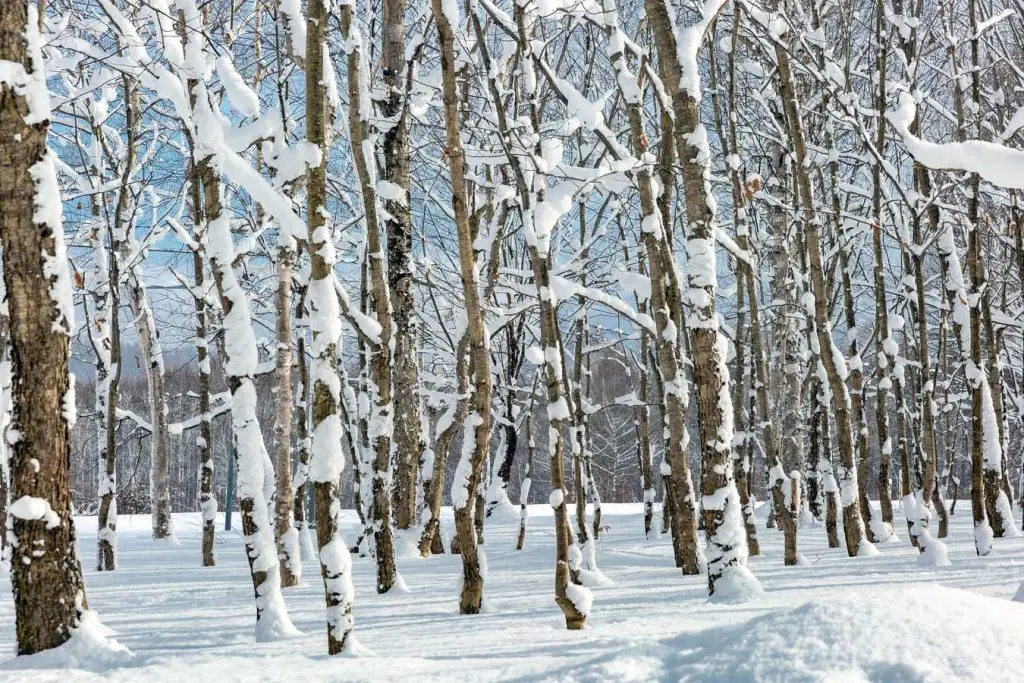
How to keep your camp organized
Keeping your campsite organized is becoming harder due to the increasing amount of gear campers pack. But hammock camps can be easily organized with some clever suspended storage techniques.
Hang camping gear off the hammock – You can use hammock loops or carabiners to hang camping gear off the ground. Even the camping hammock can be hung off these loops to keep the camp location tidy.
Use a ridgeline organizer – You can also hang a ridgeline to store your pocket knives, headphones, and/or flashlight within easy reach. There’s a similar alternative for heavy gear as well.
For hammocks that don’t feature hanging loops, you can also consider hanging a gear sling underneath your hammock which can hold heavy backpacks, boots, and other equipment.
How and when to clean your hammock
Keeping hammocks clean is not complicated. Most are made from nylon, which is a material that washes and dries very easily and quickly.
Almost all hammocks can be safely washed in the washing machine. However, you should always firstly check the manufacturer’s recommendations before washing it with laundry.
A hammock might only get stained and not need a full wash. Cleaning it with alcohol can be all that’s needed. You can apply alcohol and rub the stained area off easily.
Another important tip to avoid stains is to simply eat away from your hammock. Food stains are normally the most popular but preparing a quick camping meal away from where your sleeping is all that’s needed.
When it comes to hammock washing frequency, there’s no direct number to aim for. You can wash the hammock when you feel it’s not clean and that it doesn’t smell as fresh as it should. Most of its materials and the straps can be washed in a washing machine.
Please make sure that carabiners should not be placed in the washing machine together with the hammock.
They can be washed by hand with soap and water. At the same time, straps might also need to be washed by hand to remove tree sap. Soap and water or solutions with alcohol are good options for manually rubbing sap off straps.
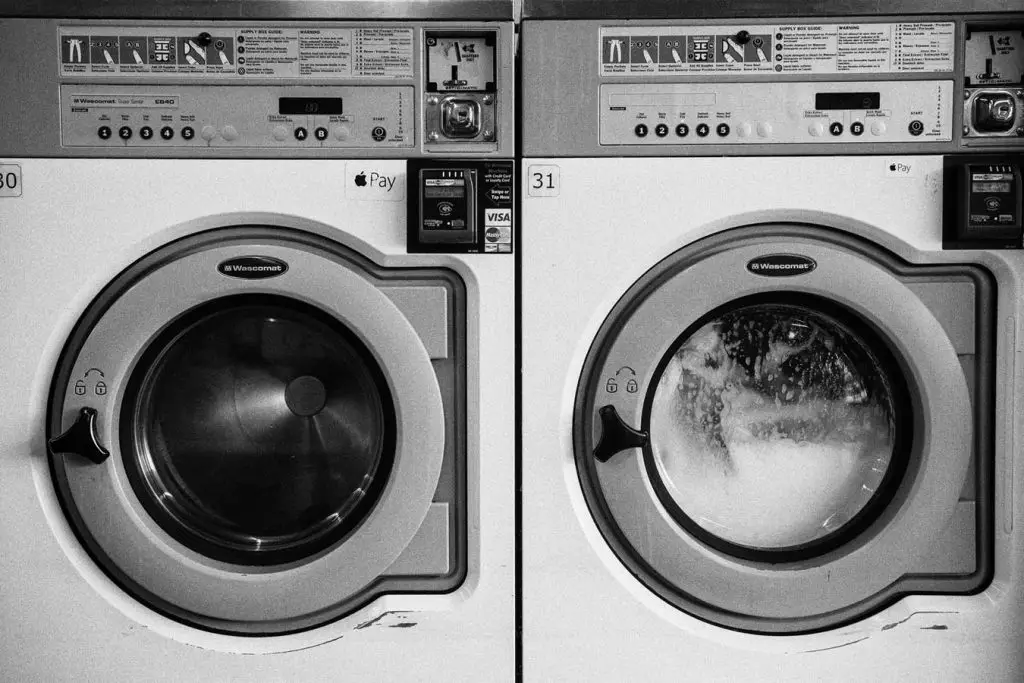
Hammock camping safety
Safely using a hammock is as important as finding its best comfort. It all starts with the camping location but even the way you test your hammock is important for your camping safety.
Assess the surrounding area – Before unpacking, it’s wise to assess the overall safety of the area. Your criteria should include the healthiness of the trees, both at ground level and above, the proximity to water, and even possible high wind exposure.
Check for hammock rips – Before using the hammock, it’s recommended to check for any tears and rips. You can also analyze hammock straps as they need to be in top condition to safely hold your weight.
In case you find large tears in your hammock or straps, it’s simply best to try a different camping solution where possible.
Choose trees which are 13-17’ apart – The two trees you select to suspend your hammock from should be at least 13’ apart. This ensures your hammock has sufficient space to unfold and that you can create the deep sag necessary for maxim comfort.
Test the hammock before climbing in – Even after setting up your hammock hundreds of times, it’s best to first test it out before fully lying flat in it. This can be done by getting in gradually, without adding your whole body weight at once.
How to follow the principles of leave no trace
Leave no camping trace is a solid principle of minimum environmental care. With more people enjoying hammock camping than ever before, considering its impact on the environment is crucial. As a result, you can follow these simple steps that limit camping traces.
It starts with the straps – The biggest hammock impact has on trees is with cord straps which cut into the bark. You can move towards tree saver straps or nylon straps which are considered safer and which considerably limit the possible damage made to the trees.
Only use hammock-specific gear – Any permanent hammock setup gear is not recommended. Using nails on trees is not recommended. Bolts and other similar gear is not a cautious method of hanging a hammock and their permanent damage to the tree can be irreversible.
Staying true to hammock-made gear also means traveling light. For example, using other types of nets to keep bugs and mosquitoes only adds weight to the camping gear as nylon nets are lightweight. Hammock straps are often lighter than cord or braided rope as well.
Camp at least 200 feet away from water sources – Camping away from water sources prevents disturbing wildlife. Unique plants grow in an immediate surrounding are of water and keeping them safe means camping at least 200 feet away from lakes or rivers. Camping further out also limits water pollution dangers.
Consider local camping regulation – Local regulation might prevent hammock camping. You need to check if your national park or local camps allow hammocks before heading out in the wilderness.
Respect other campers – The days of solo camping are now gone as many more people are getting into camping. You can show respect to other nearby campers by keeping noise levels low.
In case you want to offer a helping hand to others who need to adhere to leaving no camping traces, you can also explain the importance of hammock straps for tree health.

